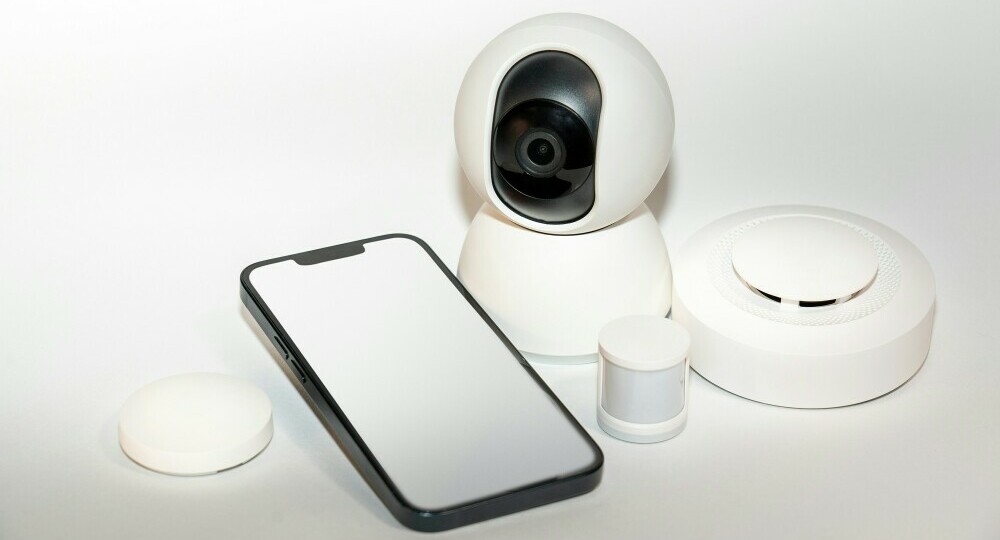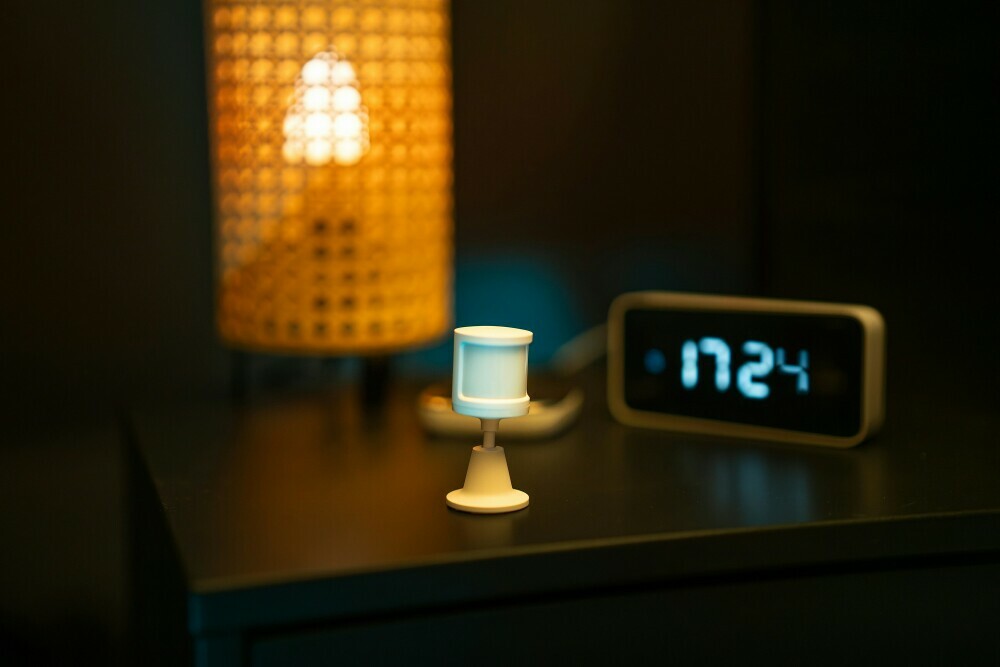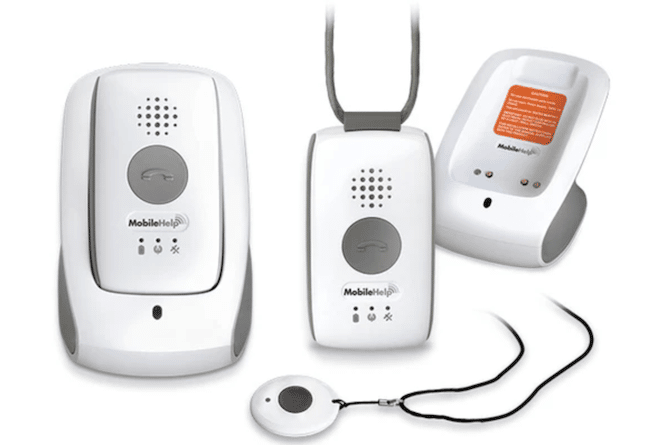Peace of mind was what I was looking for while I was caring for my mom. Room monitoring devices gave me the comfort that my mom would be safe even if I wasn’t home. Room monitoring devices for seniors are more than technology; they provide a safety net for your loved ones, especially those living alone. They also provide peace of mind for family members and caregivers.
Imagine a tool that serves as a guardian, always watching, ready to act when a loved one needs help. That’s the role of room monitoring technology in the lives of seniors. The right mix of sensors and systems can make a significant difference in the safety and well-being of your family members as they age.
I will tell you about the different gadgets and systems that, when pieced together, create a watchful eye over the seniors in our lives. These devices offer alerts and updates, even when you aren’t there. Don’t worry if this seems too technical. These devices are designed to be user-friendly and easy to set up. Let’s see which is the right device for you.
Types of Room Monitoring Devices and Their Functions
Motion Sensors
Motion sensors are one of the first lines of defense against accidents in the home. Devices like the SmartThings Motion Reader can alert caregivers when there’s no activity for a concerning amount of time, potentially signaling a fall or medical emergency. Plus, the Ring Motion Detector extends that coverage to the outdoors, keeping an eye out for any unexpected movements.
Bed and Chair Sensors
Bed and chair sensors take monitoring a step further, keeping tabs on the times a senior leaves or returns to their bed or resting chair. The Smart Caregiver Wireless Bed Alarm System, for instance, can send an alert if there’s unusual activity, like getting up in the middle of the night, which could indicate discomfort or the need for assistance. Pressure sensing bed pads add an additional layer of oversight, silently observing and sending signals as needed.
Fall Prevention Devices
Next up, fall detection devices such as MobileHelp Medical Alert and Bay Alarm Medical are designed for rapid response in the event of a fall. They don’t just detect the incident; they’re set up to automatically notify caregivers or emergency services, getting help on the way as swiftly as possible.
Each of these devices plays a critical role in safeguarding our loved ones. But these aren’t just standalone gadgets; many of them work best when they’re part of a constellation of monitoring technologies tailored to individual needs.
Enhancing Safety Through Sensors and Cameras
Ensuring the safety of seniors, particularly those with conditions like dementia, requires constant vigilance. Let’s review the different sensors and cameras that may provide that.
Door and Window Sensors
Door and window sensors are discrete yet highly effective devices that are designed to monitor the opening and closing of exits, sending an alert if a senior wanders out unexpectedly. I’m going to explain how these tools, like the SimpliSafe Entry Sensor or Nest Detect, can act as silent guardians, enhancing the security of vulnerable individuals.
Cameras and Video Monitoring Systems
Monitoring isn’t just about keeping tabs on movements; it’s also about being able to visually check in on your loved ones. I’m talking about cameras and video monitoring systems, such as the Nest Cam or Ring Indoor Cam. These devices go even further by providing live video feeds, allowing caregivers to see that the seniors in their care are safe and well at any given moment. They can be a game-changer for providing that much-needed peace of mind.
Environmental Sensors
Then there’s the matter of environmental sensors. It’s easy to forget that dangers aren’t always physical. Seniors are just as susceptible to hazards like carbon monoxide or smoke, sometimes even more so. Devices like Google Nest Protect or Honeywell Home T9 are adept at detecting such risks, promptly alerting both seniors and caregivers when air quality is compromised or when there are drastic changes in temperature or humidity. These devices don’t just safeguard; they could very well save lives.
Now, I want to transition from discussing these critical devices to highlighting some of the latest smart solutions on the market. In the next section, I’ll delve into wearables and home hubs. You’re going to find out how combining these innovations with the sensors and cameras can create a solid safety net around our seniors.
Smart Solutions: Wearables and Home Hubs
When it comes to safeguarding your loved one, wearable devices and smart home hubs are game-changers. Wearables sit discreetly on the wrist or as a pendant, and they do more than just tell time. They offer independence to move around, knowing that help is a button-press away. Let’s explore how these wearables work and why they’re a beacon of hope for many families.
Wearables
Wearable alert devices like MobileHelp Medical Alert and Life Alert are equipped with technology that can detect falls automatically or send an alert when triggered manually. This means that seniors don’t have to rely solely on their ability to seek help; these gadgets have their backs. They’re particularly useful for individuals who may experience sudden health issues or mobility challenges.
Smart Home Hubs
Now, how do you control and manage all these devices? Smart home hubs. Not only do they centralize control of your various smart devices, but they also make it possible to manage an entire safety net from one place. With hubs like Amazon Echo or Google Nest Hub, you can easily monitor and adjust settings as needed, ensuring that every element of a senior’s monitoring system is functioning optimally.
Voice Assistants
Voice assistants have made an impressive entrance into the room monitoring arena. With simple voice commands, seniors can easily call for help through devices like Amazon Alexa with Care Hub or Google Assistant using Nest features. These are perfect for times when reaching for a wearable or phone isn’t feasible.
Smart Plugs
Then there’s the ingenious use of smart plugs like the TP-Link Kasa Smart Plug or the Wemo Mini Smart Plug. These nifty devices let caregivers ensure critical appliances are not just turned off, but unplugged, preventing potential accidents. Plus, with one swipe on a smartphone, family members can control the environment inside a senior’s home from anywhere in the world.
I hope that you’re beginning to see the potential in these smart solutions. They’re not only providing safety, but also delivering convenience and a sense of control to both seniors and their caregivers. This lays the groundwork for a personalized care system, which is what we’re going to delve into next.
Crafting a Supportive and Safe Environment for Seniors
I’m going to wrap things up by emphasizing how these room monitoring devices are far more than just tech tools; they are an integral part of creating a supportive and safe environment for your loved one. They provide a sense of dignity, independence and the security of knowing that help is readily available when needed.
Choosing the right combination of devices is key. You can always adjust your approach down the road as needs change, but starting with a strong foundation of safety and monitoring will give both seniors and caregivers peace of mind. These systems aren’t one-size-fits-all. Personalize them to address the specific health conditions, living situations, and preferences of each senior.
I hope that this walkthrough has given you a clearer understanding of how different room monitoring devices work and how they can be tailored to create a comprehensive care network. My advice? Start simple, evaluate frequently, and choose something that resonates with you and the senior you’re supporting.
Remember, your first attempt at setting up a home monitoring network doesn’t need to be your last. The technology is evolving, and so can your system. Adjust and expand as necessary, always with the senior’s comfort and confidence at the heart of any changes.
Here’s a little transparency: Our website contains affiliate links. This means if you click and make a purchase, we may receive a small commission. Don’t worry, there’s no extra cost to you. It’s a simple way you can support our mission to bring you quality content.
Recommended For You

Gay and Aging – Going Back In The Closet?
Sally I still remember that day when I met Sally. She had just been released from the hospital after a recent fall and needed help with bathing and basic chores around the house. I owned an in-home senior care agency in Palm Springs, CA and Sally had been referred to

12 Steps To Reduce Caregiver Stress
If you are reading this article, chances are you are a caregiver and you are stressed out! I’ve been there. Being a caregiver is one of the most selfless and …

Home Safety Checklist For Seniors – Free Download
One of the most common questions I get from people is where can I find a home safety checklist for seniors? Home safety is one of the most pressing concerns …

Standing Wheelchair Reviews – Get Off Your Butt!
My mother, Barbara, had MS and used a standing wheelchair for years. She LOVED that wheelchair. When we were out in public, she would often ask me to stand her …

Elderly Fall Prevention Tips
One-third of seniors over the age of 65 will fall this year and only half of them will tell their doctor about it, according to the Centers for Disease Control …

Fall Prevention Checklist For Seniors – Free Download
As we age, maintaining our balance and mobility becomes increasingly challenging. Falls can lead to serious injuries and a significant loss of independence. However, many falls are preventable with the …




